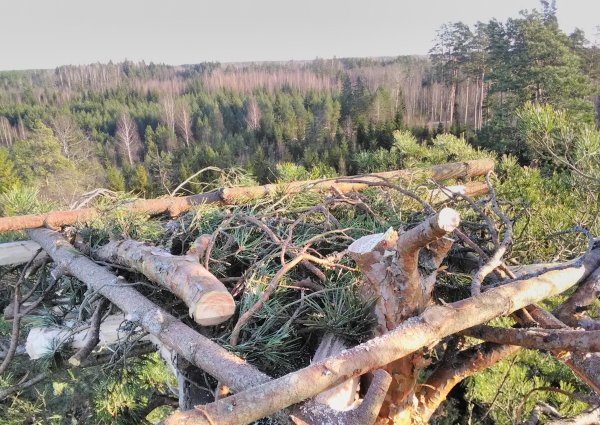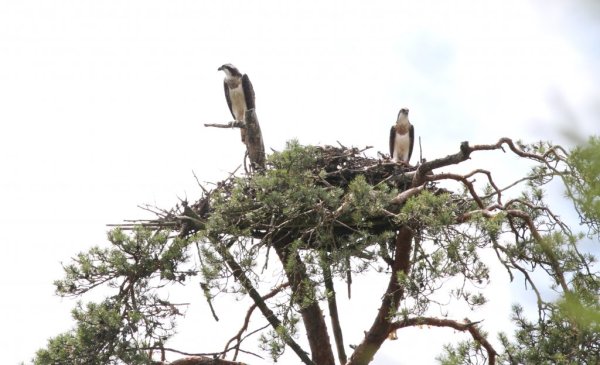Environmental Experts Build Nests for Ospreys
To promote the nesting success and protect birds of prey such as ospreys, JSC “Latvia’s State Forests” (LVM) environmental experts build nests for these birds. While ospreys are away to spend the winter in Africa, five nests have already been built this year and five more are yet to come.
The first man-made nests for osprey protection in Latvia were built back in 1982. 200 man-made nests have been built for ospreys since 2007. 87 of these nests were occupied by ospreys in 2019, which means that more than half of all occupied nests in 2019 were made on man-made platforms.
Osprey is a specially protected bird species, their nesting sites are protected with special microreserves, but that is not enough. Ospreys mostly choose withered trees for their nests, as well as old pine trees or spruces with broken treetops. If the nest or the whole tree falls down in strong wind, current year`s brood can pass away and ospreys can leave the territory, if there are no other suitable trees in the vicinity.
To ensure that these territories last for a long time, it is necessary to fasten the nests. Man-made nests are usually built, if a bird-made nest on a natural tree is not stable or if it is made on a withered tree. If a man-made nest is built accurately and the tree, on which it stands, does not fall or break in strong wind, the nest can serve for more than ten years. That is why it is important to choose the best place and tree, where to build a nest. The chosen tree must be higher than other trees around. For this reason, nests often are built in clearings, and on those ecological trees, that are left on the edges of clearings, also on swamp edges and in swamps – these are places preferred by ospreys. Man-made nests are usually built on pine trees, to a lesser degree on spruces.
It is worth mentioning that man-made nests are more stable, they do not fall off neither in the nesting season nor in the post-nesting season. This method also helps attracting ospreys to territories that are provided with sufficient protection and have good feeding sites, but lack nesting trees.
Osprey is a relatively large bird of prey with long wings. The lower part of its body, head and tail feathers are white, which beautifully contrasts the dark brown upper part of its body. The bird has a distinguished dark eye line.
Ospreys are relatively rare in Latvia – we have about of 200 couples nesting in Latvia. The majority of the European population nest in Sweden, Finland and Russia (altogether more than 7000 couples).




